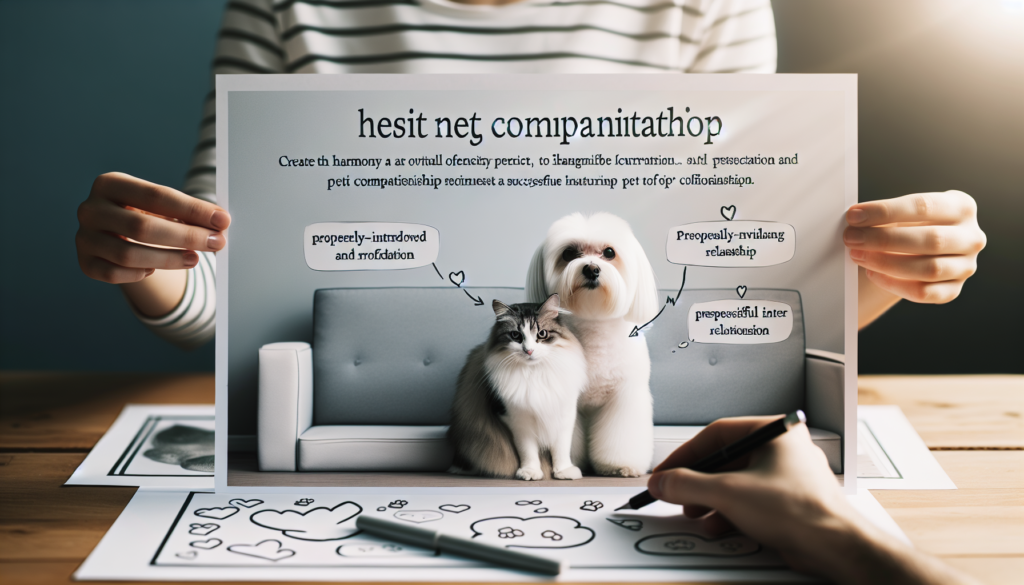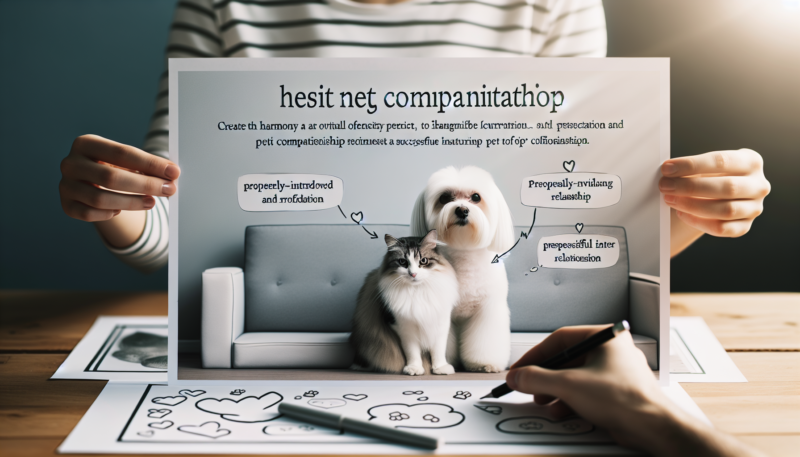Have you ever wondered if Maltese dogs and cats can get along? Well, the answer is yes! Despite their different personalities and instincts, these two adorable creatures can forge a harmonious relationship and even become the best of friends. Whether you already own a Maltese or are considering getting one, this article will explore the unique dynamics between Maltese dogs and cats, and provide you with some tips on how to ensure a smooth introduction and successful cohabitation. So, let’s embark on this delightful journey of discovering the potential for friendship between Maltese dogs and cats.
Can Maltese and cats get along?

Introduction
If you’re considering bringing a Maltese dog into your home but already have a cat, you may be wondering if they can get along. The relationship between a Maltese dog and a cat can vary depending on various factors, such as their individual temperaments and early experiences. This article will explore the dynamics between Maltese dogs and cats, provide guidelines for introducing them, and offer tips for fostering a harmonious coexistence.
Understanding the Temperament of Maltese
Maltese dogs are known for their affectionate and playful nature. They are generally friendly towards other animals, including cats. However, it’s important to remember that every dog is unique, and individual temperaments can vary within the breed. Some Maltese dogs may be more sociable and accepting of cats, while others may be more reserved or even territorial.
Understanding the Nature of Cats
Cats, on the other hand, possess their own set of instincts and behaviors. They are known for their independence and territorial nature. While some cats may readily accept a new dog into their space, others may be more cautious or even fearful. Additionally, individual cat breeds and personalities can influence their compatibility with other animals, including dogs.
Factors Influencing Compatibility
Several factors can influence the compatibility between Maltese dogs and cats. Early experiences and socialization play a significant role. If a Maltese has been introduced to cats from a young age and had positive interactions, they are more likely to be accepting of them. Pre-existing prey drive is another important consideration, as some dogs may instinctively see cats as potential targets. Size and strength differences also need to be taken into account, as a large, energetic dog may accidentally harm a small cat. Age and energy levels of both animals should also be considered, as a high-energy dog may overwhelm a senior or low-energy cat. Finally, individual personalities and previous positive or negative interactions can greatly influence compatibility.

Early Introductions
When introducing a Maltese dog to a cat, it’s crucial to proceed gradually and in a controlled manner. Start by allowing them to become familiar with each other’s scent and visual presence. You can do this by swapping bedding or toys between them, or by using a baby gate to create a physical barrier while allowing visual interaction. Always reinforce positive behavior during these encounters and provide treats and praise for calm and appropriate responses. Consider keeping them in separate living spaces initially to ensure a stress-free adjustment period.
Creating a Safe Environment
To facilitate a positive relationship between a Maltese dog and a cat, it’s important to create a safe environment for both pets. Cats appreciate vertical space, so providing cat trees, shelves, or window perches can give them a sense of security and allow them to observe the dog from a safe distance. Designate retreat areas for the cat, such as high shelves or rooms with a baby gate, so they can escape and have their own space. Ensure that food and water sources for both pets are secure and separate to avoid any potential resource guarding. Proper litter box placement is essential to provide the cat with a private, quiet area away from the dog. Lastly, be mindful of potential hazards in the environment that could harm either pet.
Supervising Interactions
When the Maltese dog and cat are eventually allowed to interact directly, it’s crucial to closely monitor their body language and behavior. Look for signs of distress or discomfort, such as hissing, growling, or aggressive posturing. If any conflicts arise, it’s important to intervene calmly and separate the animals to prevent escalation. Forcing them to be together can lead to negative associations and further tension.
Positive Reinforcement Training
Using positive reinforcement techniques can help foster a positive dynamic between a Maltese dog and a cat. Reward calm and appropriate behavior from both pets, reinforcing moments of mutual respect and tolerance. Gradual desensitization and counterconditioning can also be helpful in changing the dog’s emotional response to the presence of the cat. Training basic commands and obedience skills for the dog can establish boundaries and improve their control around the cat.
Handling Conflicts
In the unfortunate event that conflicts persist or escalate despite your best efforts, it may be necessary to seek professional help. A certified animal behaviorist or a positive reinforcement-based dog trainer can provide guidance and implement strategies to address the issues. They can assess the individual needs of both pets and develop a customized plan to facilitate a peaceful coexistence.
Conclusion
While the compatibility between a Maltese dog and a cat depends on various factors, it is possible for them to get along harmoniously. By understanding the temperament of Maltese dogs and the nature of cats, and by following proper introductions, creating a safe environment, and providing supervision and training, you can increase the chances of a positive relationship between the two. Remember to be patient, persistent, and seek professional help if needed, as every dog and cat is unique and may require individualized strategies. With love, patience, and respect for each pet’s needs, a happy and peaceful coexistence can be achieved.
